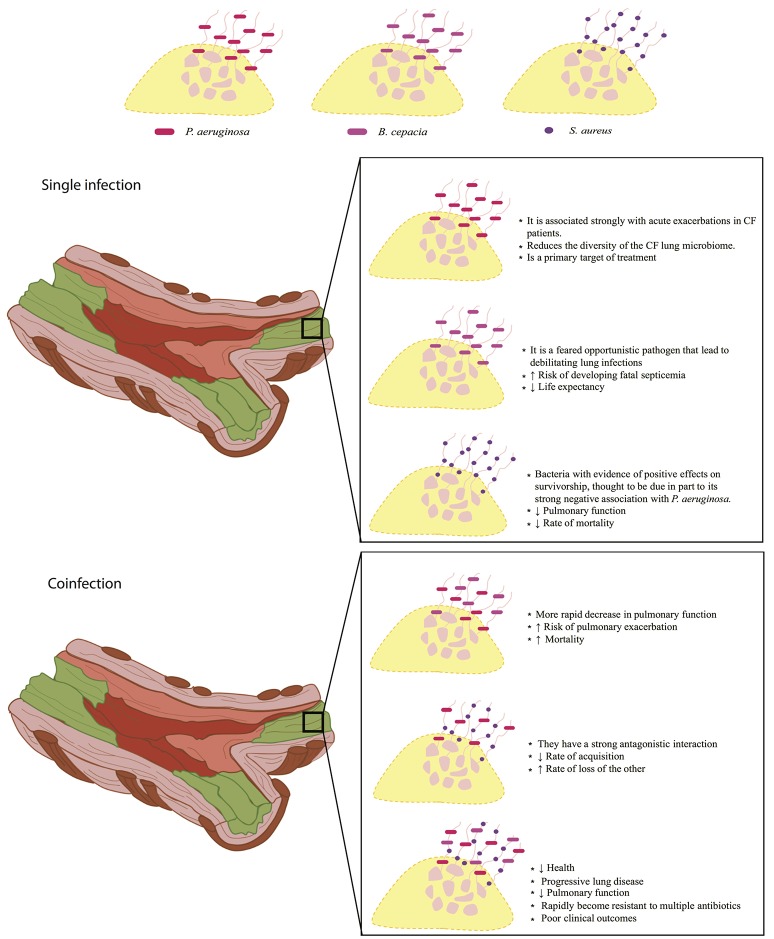Figure 1.
NET formation in the lung surface of cystic fibrosis patients. Implications on disease prognosis (text box) in bacterial single infections (middle panel) and coinfections (lower panel) are shown. NET formation can constitute a scaffold for the establishment of simple infections or coinfections that can directly influence the elimination of pathogens that have direct repercussions on patient's health. Upper panel, within single infections, P. aeruginosa is the main bacterium that colonizes the lungs of patients with cystic fibrosis, and is associated with decreased microbiome as compared to healthy individuals. Patients colonized with B. cepacia are at higher risk of developing septicemia by decreasing their life expectancy. On the other hand, S. aureus is less aggressive compared to P. aeruginosa and B. cepacia, despite this, it can decrease lung function and increase the mortality rate. Bottom panel, mixed infections caused by P. aeruginosa and B. cepacia may become the most aggressive, due to a rapid loss of lung function, increasing the risk of pulmonary exacerbation and mortality. Coinfections between P. aeruginosa and S. aureus, have a very antagonistic interaction in which they compete for their establishment by decreasing the rate of acquisition and the rate of loss of another, such battle promote increased lung damage and rapid worsening of patient's health. On the other hand, coinfections between P. aeruginosa, S. aureus, and B. cepacia causes progressive lung disease and decreased lung function severely compromising patients' health.

